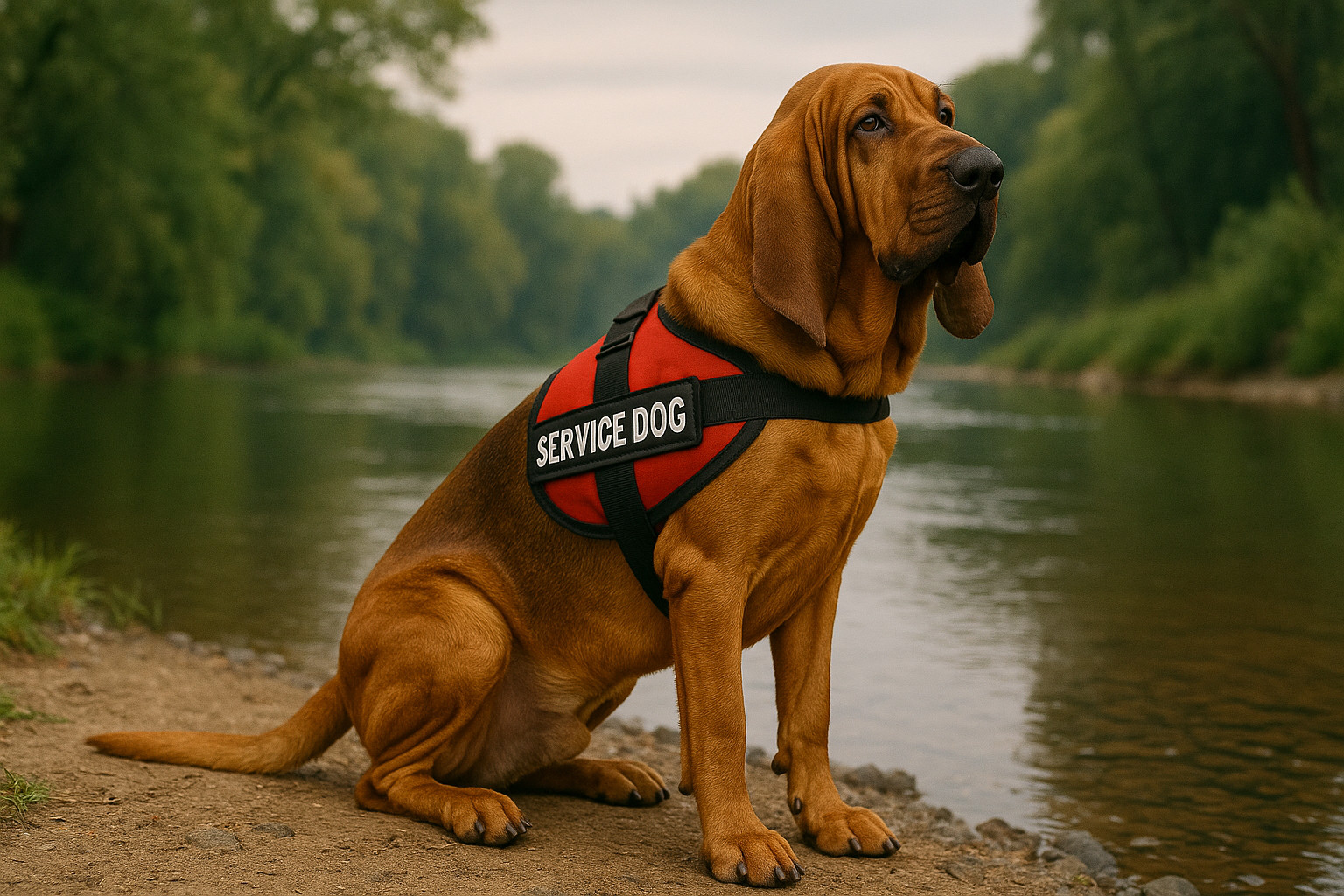Bloodhound as a Service Dog

The use of various dog breeds for service roles continues to evolve as the specific task requirements and individual competencies of dogs are rigorously matched. Among the tapestry of breeds, the Bloodhound stands out due to its remarkable olfactory senses. However, when assessing their candidacy for service work, it is vital to consider a holistic view of their characteristics, abilities, and limitations. This article provides a comprehensive exploration of the potential of Bloodhounds as service dogs.
Bloodhound Overview
The Bloodhound, with its origins deeply rooted in medieval times, is renowned for its exceptional tracking abilities, primarily used for trailing. Known for their unwavering determination and powerful sense of smell, they have historically been instrumental in law enforcement and search-and-rescue missions. When considering service work, these hounds present unique advantages and challenges owing to their innate characteristics.
Physical Characteristics
Bloodhounds are large, powerful dogs, immediately recognizable by their loose, wrinkly skin and long, drooping ears. These features aren't merely aesthetic—they play a role in their scenting abilities. The loose skin helps capture and retain scent particles as they track, while the long ears sweep scents up from the ground.
Their size, typically weighing between 80 to 110 pounds, and muscular build indicate physical strength that can be advantageous in particular service tasks, such as mobility assistance. However, their size can also be a drawback in confined environments and may not align with the needs of handlers requiring smaller or more agile companions.
Energy levels in Bloodhounds are moderate, with a predisposition towards endurance rather than bursts of activity. This endurance is particularly useful for lengthy tracking tasks but may require managed outlets for energy in other roles to prevent restlessness or anxiety.
Temperament and Attitude
Bloodhounds are gentle, affectionate, and even-tempered, traits that contribute positively to their potential as service animals. Their typical demeanor is one of good-natured patience and friendliness, making them well-suited for environments that range from active public spaces to quieter personal settings.
Their independence, however, is a double-edged sword in the scope of service work. While this trait embodies intelligence and capability for decision-making, it can also manifest as stubbornness. A Bloodhound may choose to follow an intriguing scent rather than obey commands, necessitating specialized training to ensure focus and compliance.
In stressful or novel environments, Bloodhounds usually maintain composure, seldom showing aggression. Their preference is for investigation rather than confrontation, which helps mitigate potential risks during service work in crowded or noisy places.
Types of Service Work
Bloodhounds excel in roles that utilize their unparalleled scent-tracking proficiency. They are particularly effective in:
- Search and Rescue (SAR): Their original purpose aligns perfectly with SAR missions, combing large areas to locate individuals.
- Scent-Specific Tasks: Beyond SAR, they can track the scent of particular individuals for investigative purposes in security or forensic contexts.
Their large size and strength make them potential candidates for certain mobility assistance roles, though they are less commonly used in tasks requiring constant close proximity or interaction, such as guide work for the visually impaired or medical alert tasks. Their independent nature must be considered when assessing roles requiring high levels of direct human interaction.
Health Considerations
Like all breeds, Bloodhounds have specific health considerations that can impact their suitability for service work. They are prone to conditions such as hip dysplasia, elbow dysplasia, and gastric torsion, the latter being particularly acute due to their deep chests. These conditions necessitate regular veterinary check-ups and can impede the longevity and effectiveness of a Bloodhound in service roles requiring high physical activity.
Additionally, Bloodhounds may suffer from ophthalmic issues due to their drooping eyes, which can exacerbate the accumulation of debris or bacteria. Regular eye care is essential to prevent complications from interfering with their work.
Training and Suitability
Training a Bloodhound requires willingness to accommodate and manage their distinct combination of independence and determination. Basic obedience training is essential, emphasizing the development of strong recall skills to counteract their tendency to venture off after scents.
Positive reinforcement techniques leveraging their natural instincts can enhance training compliance and efficiency. However, patience is necessary as they may not respond to commands as quickly or instinctively as more traditionally trainable breeds like Labradors or Golden Retrievers.
Their intelligence supports learning complex tracking and scent-specific roles, but their suitability for other types of service work is limited. The necessity to harness and direct their natural instincts for scent detection is a critical element of their training process.
Summary of Bloodhound
Why Bloodhounds make good service dogs:
- Unmatched scent-tracking capabilities
- Gentle and patient temperament
- Strong endurance and stamina for fieldwork
Challenges of using Bloodhounds as service dogs:
- Size can be a limitation in specific environments
- Prone to health issues that may limit longevity in service roles
- Independence can conflict with obedience requirements
Types of service work best suited for Bloodhounds:
- Search and Rescue
- Scent-detection roles
Physical attributes affecting suitability:
- Large size and muscular build can support mobility tasks
- Long-distance endurance fits extended operational needs
Temperament and behavior traits in public or stressful environments:
- Gentle and non-aggressive in stressful situations
- Strong focus can be a distraction away from handlers
Overall, while Bloodhounds possess certain qualities that make them invaluable in scent-related tasks, their use in broader services is limited by specific temperament and physical characteristics. Trainability is feasible but requires effort to harness and direct their instinctual behaviors appropriately.











